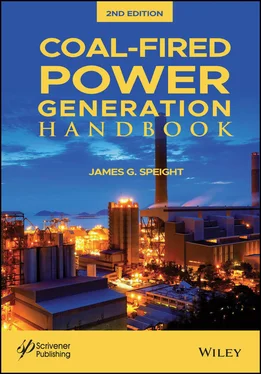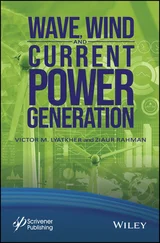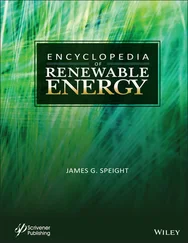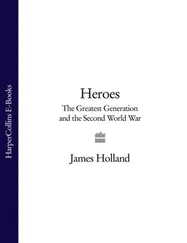On the basis of these definitions, the total recoverable reserves of coal around the world are estimated to be on the order of at 950 billion tons (950 x 10 9tons), indicating a reserves-to-production ratio of 126 years (International Energy Agency, 2010; EIA 2010, 2011, 2012a, 2012b). Furthermore, because recoverable reserves are a subset of total coal resources, recoverable reserve estimates for a number of regions with large coal resource bases (notably, China and the United States) could increase substantially as coal mining technology improves and additional geological assessments of the coal resource base are completed.
Although coal deposits are widely distributed, the majority (approximately 79%) of the recoverable reserves of the world are located in five regions: (i) the United States, (ii) Russia, (iii) China, (iv) Europe and Eurasia outside of Russia, and (v) Australia and New Zealand. By rank, anthracite, and bituminous coal account for approximately 47% of the estimated worldwide recoverable coal reserves on a tonnage basis, subbituminous coal accounts for 30%, and lignite accounts for 23%. As these numbers indicate, the United States has a vast supply of coal (approximately 28% of world reserves and more than 1,600 billion tons – 1,600 x 10 9tons – of the remaining coal resources. The United States is also the second- largest coal producer in the world (after China) and annually produces more than twice as much coal as India, the third-largest producer of coal (Höök and Aleklett, 2009; EIA, 2010, 2011, 2012a, 2012b).
The quality and geological characteristics of coal deposits are important parameters for coal reserves. Coal is a heterogeneous source of energy, with quality (for example, characteristics such as heat, sulfur, and ash content) varying significantly by region and even within individual coal seams. At upper levels of coal quality are premium-grade bituminous coals, or coking coals, used to manufacture coke for the steelmaking process. Coking coals produced in the United States have an estimated heat content of 26.3 million Btu per ton and relatively low sulfur content of approximately 0.9% by weight. At the other end of the spectrum are reserves of low-Btu lignite – on a Btu basis, lignite reserves show considerable variation (International Energy Agency, 2010; EIA, 2010, 2011, 2012a, 2012b).
While the definitions presented above are in common use, there are other systems of resource/reserve definition and nomenclature that are similar to the definitions used above (EWG, 2007) and also deserve mention here.
The definition of resources according to the scheme of the World Energy Council (WEC) involves the estimated additional amount in place ,which is the indicated and inferred tonnage of coal additional to the proved amount in place that is of foreseeable interest. This definition includes estimates of amounts that could exist in unexplored extensions of known deposits or in undiscovered deposits in known coal-bearing areas, as well as amounts inferred through knowledge of favorable geological conditions. Speculative amounts are not included.
The definition of reserves according to the scheme of the WEC is the proved amount in place , which is the resource remaining in known deposits that has been carefully measured and assessed as exploitable under present and expected local economic conditions with existing available technology. On the other hand the proved recoverable reserves is the tonnage of coal within the proved amount in place that can be recovered in the future under present and expected local economic conditions with existing available technology.
The estimated additional reserves recoverable is the tonnage of coal within the estimated additional amount in place that geological and engineering information indicates with reasonable certainty might be recovered in the future.
The International Energy Agency (IEA), BP Statistics (as in the BP Review of World Energy) and most other organization typically use the term Proved reserve ( proven reserve ) which is equivalent to the proved recoverable reserves as defined by the World Energy Council.
The US Energy Information Agency (EIA) uses nomenclature such as the demonstrated reserve base ,which covers publicly available data on coal mapped to measured and indicated degrees of accuracy and found at depths and in thick coal-beds considered technologically minable at the time of determinations. On the other hand, the estimated recoverable reserves (which corresponds to the proved recoverable reserves of the World Energy Council and to the proved reserves of the BP Review of World Energy) cover the coal in the demonstrated reserve base considered recoverable after excluding the coal estimated to be unavailable due to land use restrictions or currently economically unattractive for mining, and after applying assumed mining recovery rates. In addition, the recoverable reserves at producing mines represent the quantity of coal that can be recovered (i.e., mined) from existing coal reserves at reporting mines.
Other national geological agencies use different definitions, such as the German Bundesanstalt für Geowissenschaften und Rohstoffe (BGR), which uses the terms (i) reserves , which is equivalent to the proved recoverable reserves (WEC), and (ii) resources, which include discovered but not yet economically producible amounts and undiscovered but estimated accumulations of coal. This includes the resources as defined by the WEC as well as any other possible coal deposits.
Energy independence has been a political non-issue in the United States since the first Arab oil embargo in 1973. Since that time, the speeches of various presidents and the Congress of the United States have continued to call for an end to the dependence on foreign oil by the United States. The congressional rhetoric of energy independence continues but meaningful suggestions of how to address this issue remain few and far between.
Energy interdependence also makes the domestic economy more susceptible to disruptions in distant and unstable regions of the globe, such as the Middle East, South America, and Africa. In fact, in many countries with proven reserves, oil production could be shut down by wars, strikes, and other political events, thus reducing the flow of oil to the world market. If these events occurred repeatedly, or in many different locations, they could constrain exploration and production, resulting in a peak despite the existence of proven oil reserves.
Even in the United States, political considerations may affect the rate of exploration and production of energy sources. For example, restrictions imposed to protect environmental assets mean that some oil may not be produced. In addition, policies on federal land use need to take into account multiple uses of the land including environmental protection. Environmental restrictions may affect a peak in oil production by barring oil exploration and production in environmentally sensitive areas.
The government must adopt policies that ensure energy independence. The US Congress is no longer believable when the members of the Congress lay the blame on foreign governments or events for an impending crisis. In the United States, crude oil imports are considered a threat to national security but there is also the line of thinking that the level of imports has no significant impact on energy security, or even national security. However, the issue becomes a problem when import vulnerability increases as crude oil imports rise, which occurs when oil-consuming countries increase the share of crude oil imports from politically unstable areas of the world.
Читать дальше












